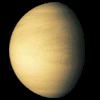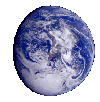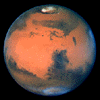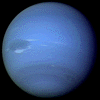 Pluto, the Ninth Planet.
Pluto, the Ninth Planet.Pluto is the outer most planet in the Solar System. Pluto was discovered in 1905 by American astronomer Percival Lowell, who assumed the position of an object beyond Neptune as a result of a "wiggle" in the planet's motion. Members of his observatory thoroughly searched the sky for Planet X for 25 years until 1930 when Clyde William Tombaugh found Pluto near the predicted position. Pluto revolves around the Sun once in about 248 years at a distance of about 3.5 billion miles! Unfortunately, only large telescopes can view Pluto. Pluto has one moon, Charon, which orbits at a distance of 13,000 miles. top

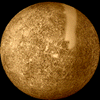 Mercury
Mercury